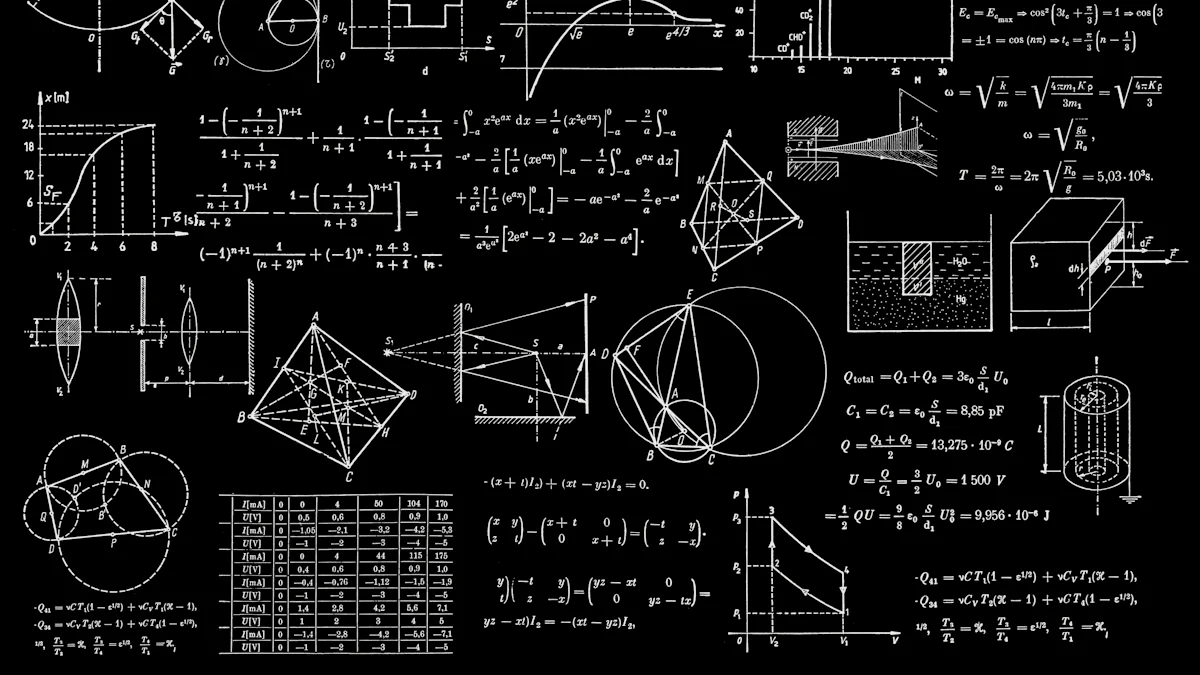
Understanding cosine similarity (opens new window) and dot product (opens new window) is crucial in data science. These concepts play a significant role in various applications, providing insights into vector similarity and alignment. In this blog, the focus will be on delving deep into the applications and differences between these two metrics to enhance your understanding of their importance in data analysis.
# Understanding Cosine Similarity
When delving into the realm of cosine similarity, it becomes evident that this metric serves as a fundamental basis for various data science applications. The cosine similarity algorithm is a powerful tool that allows analysts to quantify the similarity between two non-zero vectors efficiently. By utilizing the cosine similarity formula, analysts can precisely calculate the angle between vectors, providing insights into their directional alignment.
In the context of distance metrics, cosine similarity plays a crucial role in emphasizing directional similarity rather than focusing solely on magnitude, distinguishing it from traditional distance measures like Euclidean Distance (opens new window) and Manhattan Distance (opens new window). While Euclidean Distance and Manhattan Distance prioritize geometric distance (opens new window), cosine similarity remains key in scenarios where orientation is paramount.
The significance of cosine similarity extends to its practical applications in data science. From powering recommendation systems (opens new window) to enabling text analysis (opens new window), this metric proves invaluable in various domains. Analysts can leverage Python (opens new window) libraries to efficiently calculate cosine similarities, facilitating quick comparisons and insightful analyses within large datasets.
By mastering the nuances of cosine similarity, data scientists can unlock a deeper understanding of vector relationships and enhance their analytical capabilities significantly.
# Exploring Dot Product
In the realm of data science, the Dot Product holds a pivotal role as a fundamental similarity metric. This computation involves summing the products of corresponding elements in two vectors, emphasizing the correlation between their elements. Unlike cosine similarity, which focuses on angle difference, the Dot Product ranges from negative to positive infinity (opens new window), with negative values indicating opposite directions and positive values indicating alignment. A value of 0 signifies perpendicularity between vectors.
Machine learning (opens new window) heavily relies on the Dot Product for various computations. It serves as a cornerstone concept in this field, enabling efficient calculations by determining coordinate products' sum between vectors. By understanding this mathematical operation, analysts can grasp how vectors align and correlate in different scenarios.
Visualizing the results of the Dot Product through graph representations provides a tangible way to interpret vector relationships. Graphs offer a clear depiction of how vectors interact and align based on their elements. Interpreting these visualizations allows analysts to draw meaningful insights regarding vector similarities and differences.
In essence, mastering the Dot Product is essential for comprehending vector interactions and similarities efficiently in data science applications. Its significance lies in providing a quantitative measure of alignment between vectors, offering valuable insights for various analytical tasks.
# Practical Applications
# Comparing Cosine Similarity and Dot Product
In data science, understanding the nuances between cosine similarity and dot product is essential for various analytical tasks. While cosine similarity focuses on directional alignment between vectors (opens new window), the dot product emphasizes the correlation of elements within vectors. By comparing these two metrics, analysts can gain valuable insights into vector relationships and similarities.
When considering use cases in data science, both cosine similarity and dot product offer unique advantages. Cosine similarity excels in scenarios where the magnitude of vectors does not directly correlate with their similarity. On the other hand, the dot product provides a quantitative measure of alignment (opens new window), with larger values indicating greater similarity. Understanding these distinctions allows analysts to choose the most suitable metric based on their specific analytical needs (opens new window).
Efficiency in handling large datasets is another critical aspect to consider when comparing cosine similarity and dot product. While cosine similarity is beneficial for high-dimensional data where vector magnitude may not accurately represent similarity, the computational efficiency of the dot product varies depending on the dataset's nature. Analysts must evaluate the trade-offs between accuracy and computational speed when selecting a metric for analyzing large datasets.
# Future Developments
As data science continues to evolve, there are potential improvements and emerging trends related to cosine similarity and dot product that analysts should keep an eye on. Enhancements in algorithms and methodologies could further optimize the calculation processes for both metrics, leading to more efficient analyses and faster insights extraction.
Moreover, emerging trends in semantic search algorithms and recommendation systems are driving advancements in how cosine similarity is applied. By leveraging innovative techniques and technologies, analysts can enhance the accuracy and scalability of cosine-based solutions across various domains. Similarly, exploring new applications of the dot product, especially in machine learning models and vector calculations, could open up exciting possibilities for improving analytical outcomes.
By staying informed about potential improvements and emerging trends in both metrics, data scientists can stay ahead of the curve and leverage cutting-edge techniques to extract valuable insights from complex datasets.
In summarizing the exploration of cosine similarity and dot product, it becomes evident that both metrics offer unique insights into vector relationships. Cosine similarity excels in capturing directional alignment, proving valuable in applications like natural language processing (NLP) (opens new window) and recommendation systems. On the other hand, the Dot Product provides a quantitative measure of similarity, with values ranging from negative to positive infinity (opens new window). Understanding the nuances between these metrics is crucial for data scientists to make informed decisions based on specific analytical needs.



